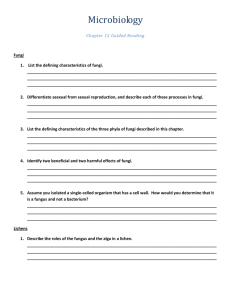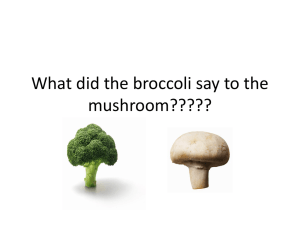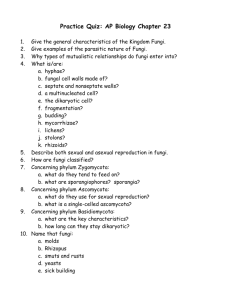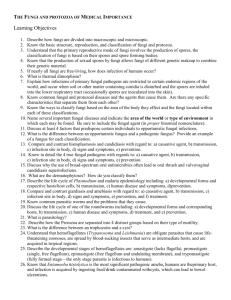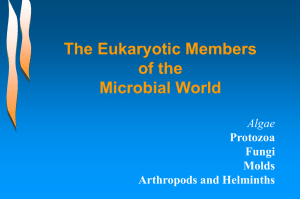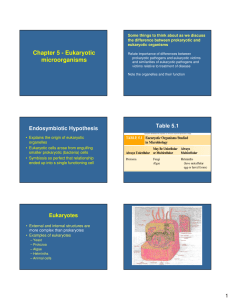Ch 12 Notes
advertisement
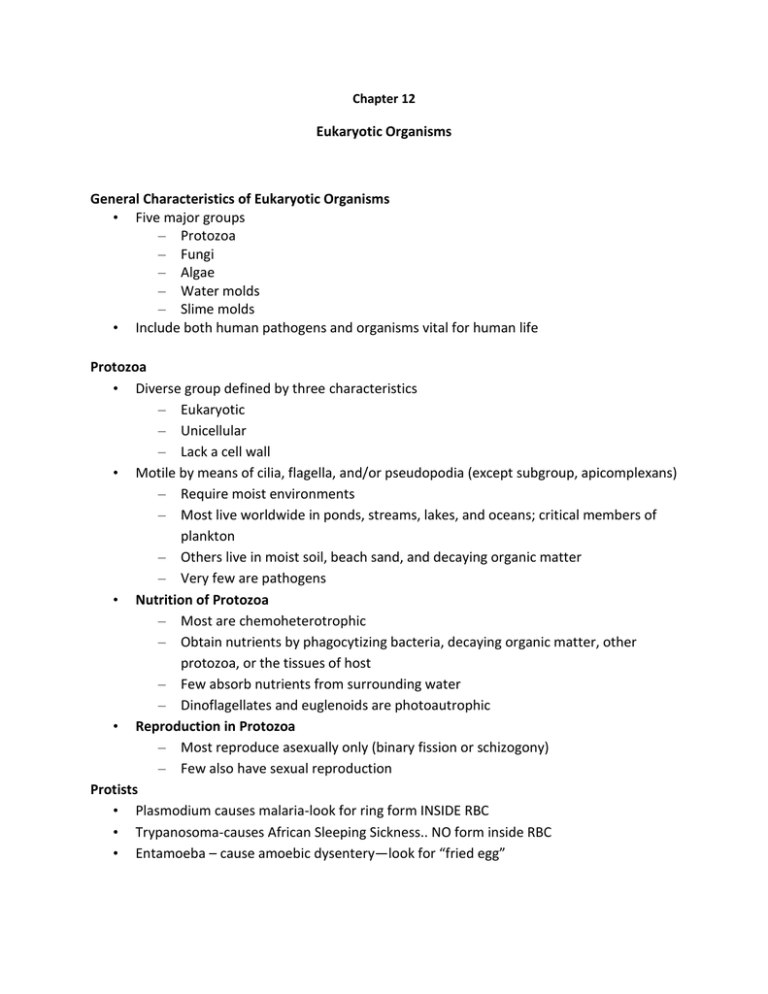
Chapter 12 Eukaryotic Organisms General Characteristics of Eukaryotic Organisms • Five major groups – Protozoa – Fungi – Algae – Water molds – Slime molds • Include both human pathogens and organisms vital for human life Protozoa • Diverse group defined by three characteristics – Eukaryotic – Unicellular – Lack a cell wall • Motile by means of cilia, flagella, and/or pseudopodia (except subgroup, apicomplexans) – Require moist environments – Most live worldwide in ponds, streams, lakes, and oceans; critical members of plankton – Others live in moist soil, beach sand, and decaying organic matter – Very few are pathogens • Nutrition of Protozoa – Most are chemoheterotrophic – Obtain nutrients by phagocytizing bacteria, decaying organic matter, other protozoa, or the tissues of host – Few absorb nutrients from surrounding water – Dinoflagellates and euglenoids are photoautrophic • Reproduction in Protozoa – Most reproduce asexually only (binary fission or schizogony) – Few also have sexual reproduction Protists • Plasmodium causes malaria-look for ring form INSIDE RBC • Trypanosoma-causes African Sleeping Sickness.. NO form inside RBC • Entamoeba – cause amoebic dysentery—look for “fried egg” Fungi • • • • • • • • Chemoheterotrophic Have cell walls typically composed of chitin Lack chlorophyll; do not perform photosynthesis Related to animals The Significance of Fungi – Decompose dead organisms and recycle their nutrients – Form associations with roots of vascular plants, which help plants absorb water and minerals – Used for food, in religious ceremonies, and in manufacture of foods and beverages – Produce antibiotics – Serve as important research tools – 30% cause diseases of plants, animals, and humans – Can spoil fruit, pickles, jams, and jellies Nutrition of Fungi – Acquire nutrients by absorption – Most are saprobes – Some trap and kill microscopic soil-dwelling nematodes – Most are aerobic; some are anaerobic; many yeasts are facultative anaerobes Reproduction in Fungi – All have some means of asexual reproduction involving mitosis and cytokinesis – Most also reproduce sexually – Budding and asexual spore formation Classification of Fungi – Division based on sexual spores formed – Division Zygomycota • Rhizopus (black bread mold) – Division Ascomycota (cup fungi) • Penicillium (look like hand and fingers) • Aspergillus (casuses aspergillosis) • Peziza • spores along cup—8 ascospores in an ascus—look like pease in a pod – Division Basidiomycota • Coprinus (mushrooms) • look for spores on gill slits – Deuteromycetes • • • Heterogeneous collection of fungi whose sexual stages are unknown rRNA analysis revealed that most deuteromycetes belong in the division Ascomycota Lichens – Partnerships between fungi and photosynthetic microbes (green algae or cyanobacteria) – Abundant throughout the world, particularly in pristine habitats – Grow on soil, rocks, leaves, tree bark, other lichens, and even on backs of tortoises, in almost every habitat – Occur in three basic shapes – fruticose, crusts, foliose Parasitic Helminths and Vectors • Parasitic worms have microscopic infective and diagnostic stages – usually eggs or larvae • Arthropod vectors are animals that carry pathogens – Mechanical vectors – Biological vectors • Disease vectors belong to two classes of arthropod – Arachnida – Insecta • 2 basic phylum—Nematoda and Platyhelminthes – Plathyhelminthes (flat worms) • Taenia (tapeworm)—look for the 3-4 cross sections • know scolex, proglottids and gravid proglottids • Fasciola (sheep’s liver fluke)-looks like large leaf • Clinorchis (Chinese liver fluke)-looks like Fasciola except MUCH smaller – Nematodes (round worms) • Enterobius (pinworm) • Ascaris (look for mounts) • Necator (new world hookworm)—look for hooks in mouth • Trichinella (causes trichinosis)—look for spirals in muscle


